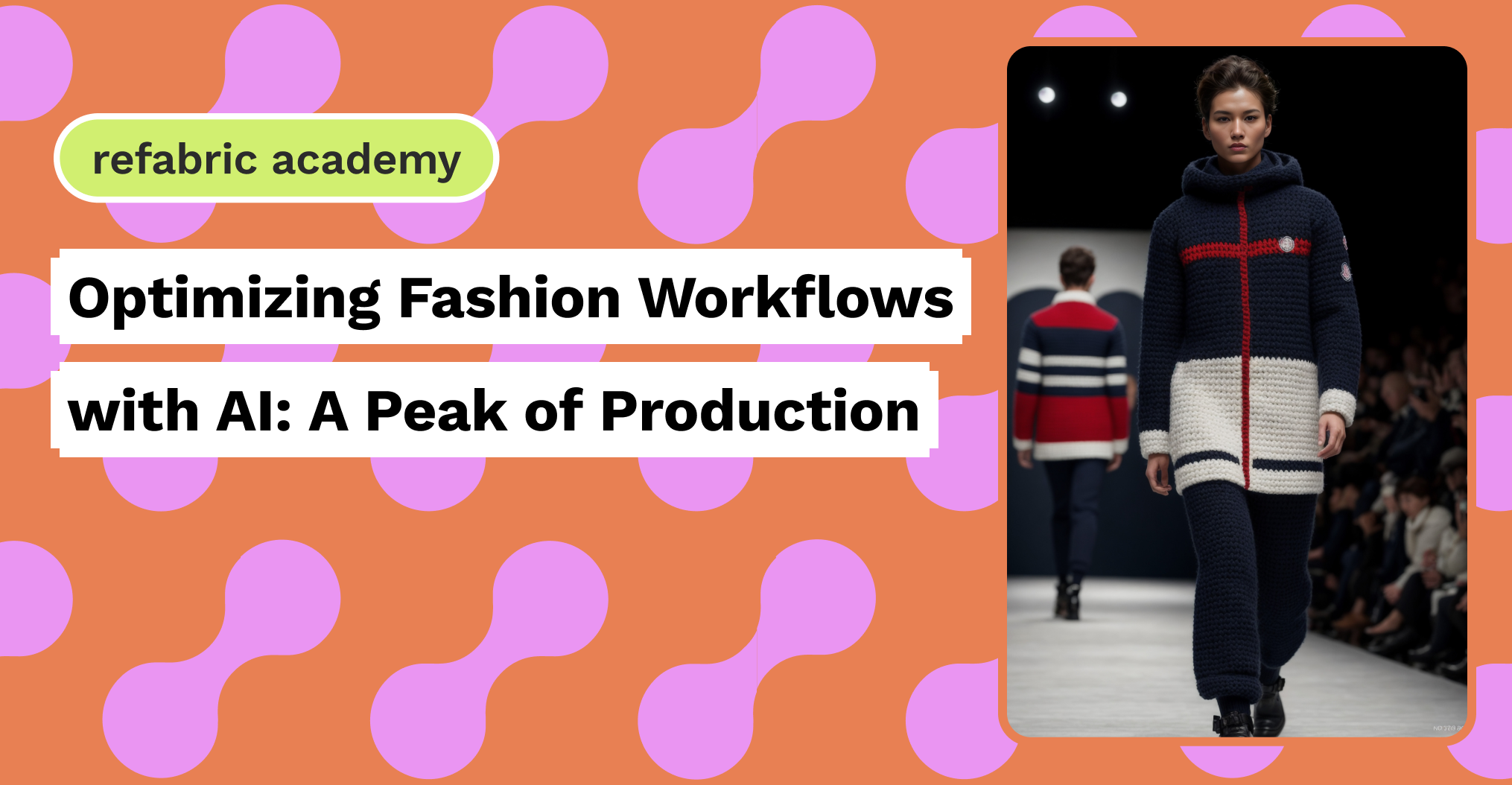In the fashion industry, staying ahead requires not just creativity but also efficiency in workflows. AI design proves the impact of AI workflow optimization, showcasing how artificial intelligence is enhancing productivity and streamlining various design and production processes in the fashion industry.
AI Workflow Optimization: A Revolution
The integration of AI into fashion workflows is a significant revolution. AI workflow optimization involves the use of advanced algorithms to analyze, automate, and enhance various stages of the design and production process. From idea to final product delivery, AI is becoming a crucial factor for efficiency in the dynamic landscape of fashion.
The Fashion Processes: Streamlining from Concept to Creation
One of the primary advantages of AI in fashion workflow optimization is its ability to streamline processes quickly. AI algorithms can analyze datasets to predict trends, optimize supply chain logistics, and automate repetitive tasks, freeing up valuable time for designers and manufacturers. This process ensures that each step from concept to creation is productive, contributing to faster time-to-market for fashion brands.
AI in Design Workflow: From Inspiration to Realization
In the design phase, AI becomes a powerful collaborator, aiding designers in transforming their visions into tangible creations. AI-powered tools assist in generating design ideas, recommending color schemes, and even predicting popular styles based on consumer trends. This augmentation of the design workflow ensures that designers can channel their creativity more effectively, focusing on the artistic aspects of their work.
Enhancing Productivity: Predictive Analytics and Beyond
AI’s role in fashion operation enhances predictive analytics and it is a game-changer for productivity. By analyzing historical data and consumer behavior, AI can predict demand trends, helping fashion brands optimize inventory levels and production schedules. This data-driven approach minimizes the risk of overstock or stockouts, ensuring that resources are utilized efficiently.
Supply Chain Optimization: Precision and Responsiveness
AI’s impact on fashion workflow is particularly contributes to supply chain management. From sourcing materials to logistics planning, AI-driven systems optimize every aspect of the supply chain. Predictive analytics enable accurate demand forecasting, minimizing delays and ensuring that production aligns with consumer demand. The result is a more responsive and agile supply chain, contributing to overall workflow efficiency.
The Synergy of Human Creativity and AI
It’s essential to note that AI optimization is not about replacing human expertise but enhancing it. The synergy between human creativity and AI efficiency creates a harmonious workflow where designers, manufacturers, and other stakeholders can leverage the strengths of both to achieve efficiency in the fashion industry.
